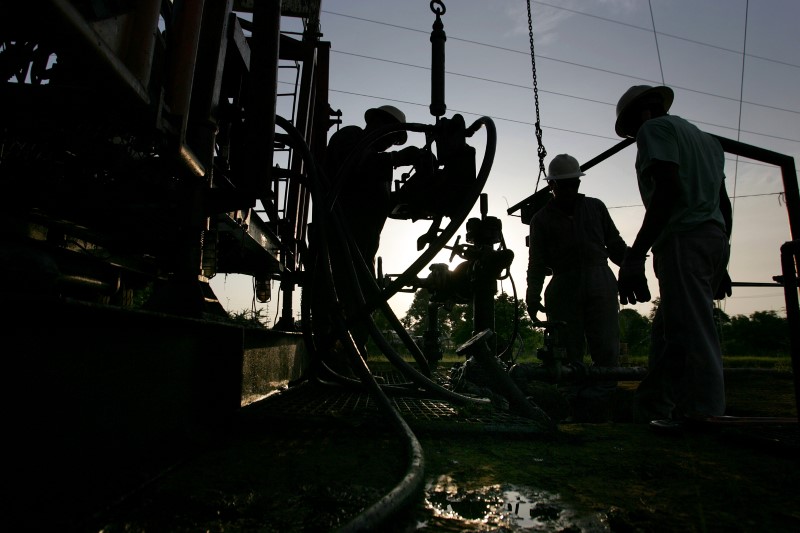* API puts U.S. crude build above forecasts
* Benchmarks in middle of $5-trading range
* U.S. crude output up 6.5 pct since mid-2016
* U.S. oil stockpiles post large gains for second week - API (New throughout, updates prices and market activity following U.S. stockpile data from API)
By Jessica Resnick-Ault
NEW YORK, Feb 14 (Reuters) - Oil prices pared gains after the settlement Tuesday, as evidence of surging U.S. crude oil stockpiles underscored concerns that shale production might limit the effectiveness of an OPEC-led effort to cut global output.
Brent crude LCOc1 traded at $55.73 a barrel at 4:39 p.m. Eastern, off the settlement of $55.97 a barrel, which was up 38 cents but well off the session high of $56.46 a barrel. U.S. light crude CLc1 traded at $52.94 a barrel following the inventory report by a trade group, after settling up 27 cents at $53.20.
After settlement, the American Petroleum Institute (API) said U.S. crude inventories rose 9.9 million barrels in the week to Feb. 10, far exceeding analysts' expectations for an increase of 3.5 million barrels. Gasoline and diesel stockpiles also rose, the API's weekly report said. U.S. government is scheduled to release its weekly data on stockpiles Wednesday morning.
On Monday, both benchmarks fell 2 percent. Both are near the middle of $5-per-barrel trading ranges seen since early December.
The Organization of the Petroleum Exporting Countries and other exporters including Russia have agreed to cut crude output by almost 1.8 million barrels per day (bpd) during the first half of 2017. The market has largely priced in these production cuts OPEC and other producers agreed to in November, said Tariq Zahir, managing member of Tyche Capital in New York.
"It would take either a supply outage or serious cuts to move it," he said. "The first month, obviously, OPEC is going to do the best it can, but after that, let's see what the second and third month bring."
Meanwhile, U.S. crude output is up 6.5 percent since mid-2016 to 8.98 million bpd, its highest since April last year.
C-OUT-T-EIA . On Monday, government data showed U.S. shale oil production for March is expected to rise by the most in five months to 4.87 million bpd. just appears to be caught in a range at the moment and mainly focused on those supply considerations," said Ric Spooner, chief market analyst at CMC Markets in Sydney.
Investors also wonder how long OPEC countries will stick to their agreed production cuts. producers want the market to believe they will stick" to the cuts, said Hans van Cleef, senior energy economist at ABN AMRO (AS:ABNd) Bank in Amsterdam. "But lessons from the past have made the market deeply suspicious."
Many analysts say oil producers must cut production more quickly.
"Based on OPEC's own numbers the message is loud and clear," said Tamas Varga, analyst at London broker PVM Oil Associates.
"Improve on compliance, cut production further and extend the deal for the second half of the year if you want to avoid yet another year of global oil inventory builds."
<^^^^^^^^^^^^^^^^^^^^^^^^^^^^^^^^^^^^^^^^^^^^^^^^^^^^^^^^^^^ GRAPHIC: OPEC vs U.S. oil production
http://tmsnrt.rs/2kPMpyh GRAPHIC: Global oil supply vs demand
http://tmsnrt.rs/2jUJLWm GRAPHIC-Brent vs dollar price correlation:
http://tmsnrt.rs/2lErzSH
^^^^^^^^^^^^^^^^^^^^^^^^^^^^^^^^^^^^^^^^^^^^^^^^^^^^^^^^^^^> (Additional reeporting by Henning Gloystein and Mark Tay in Singapore and Christopher Johnson in London; editing by Marguerita Choy and David Gregorio)
